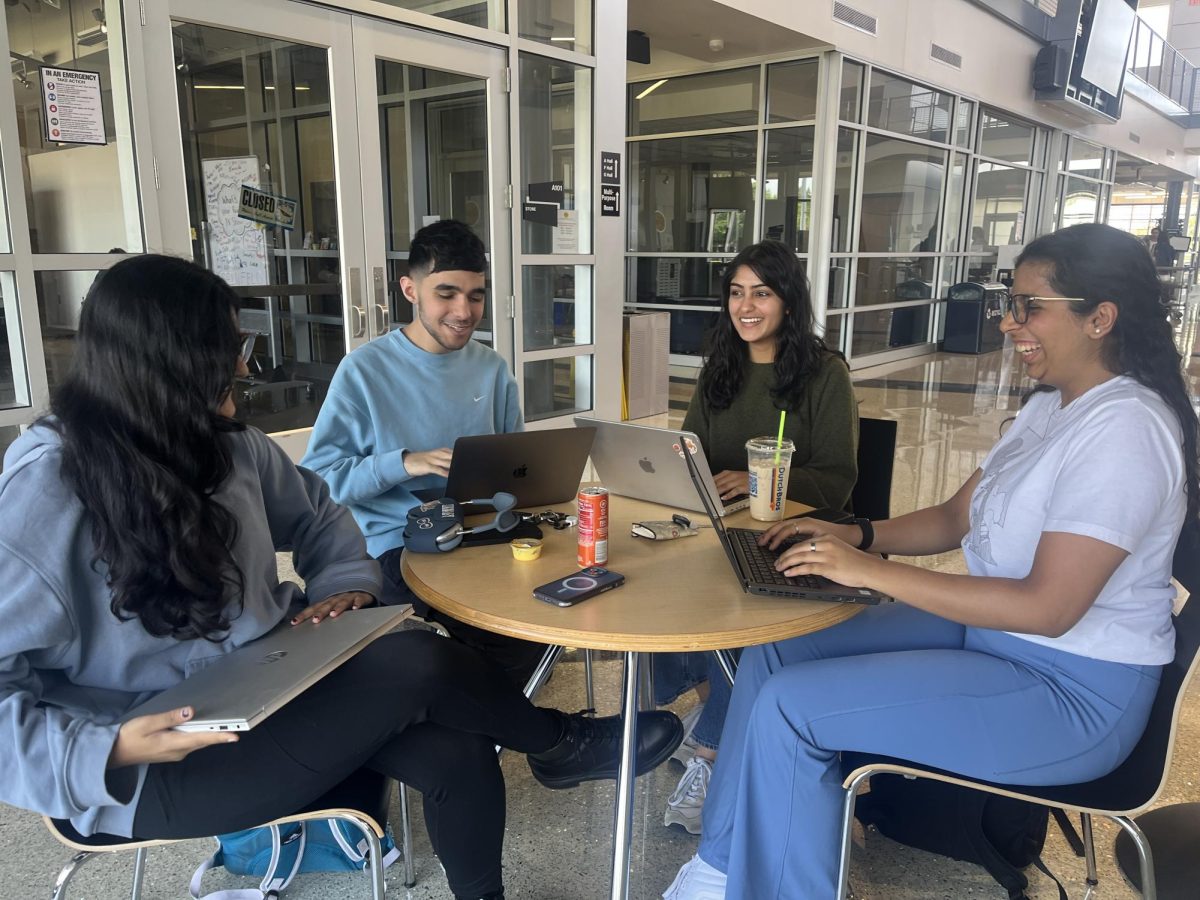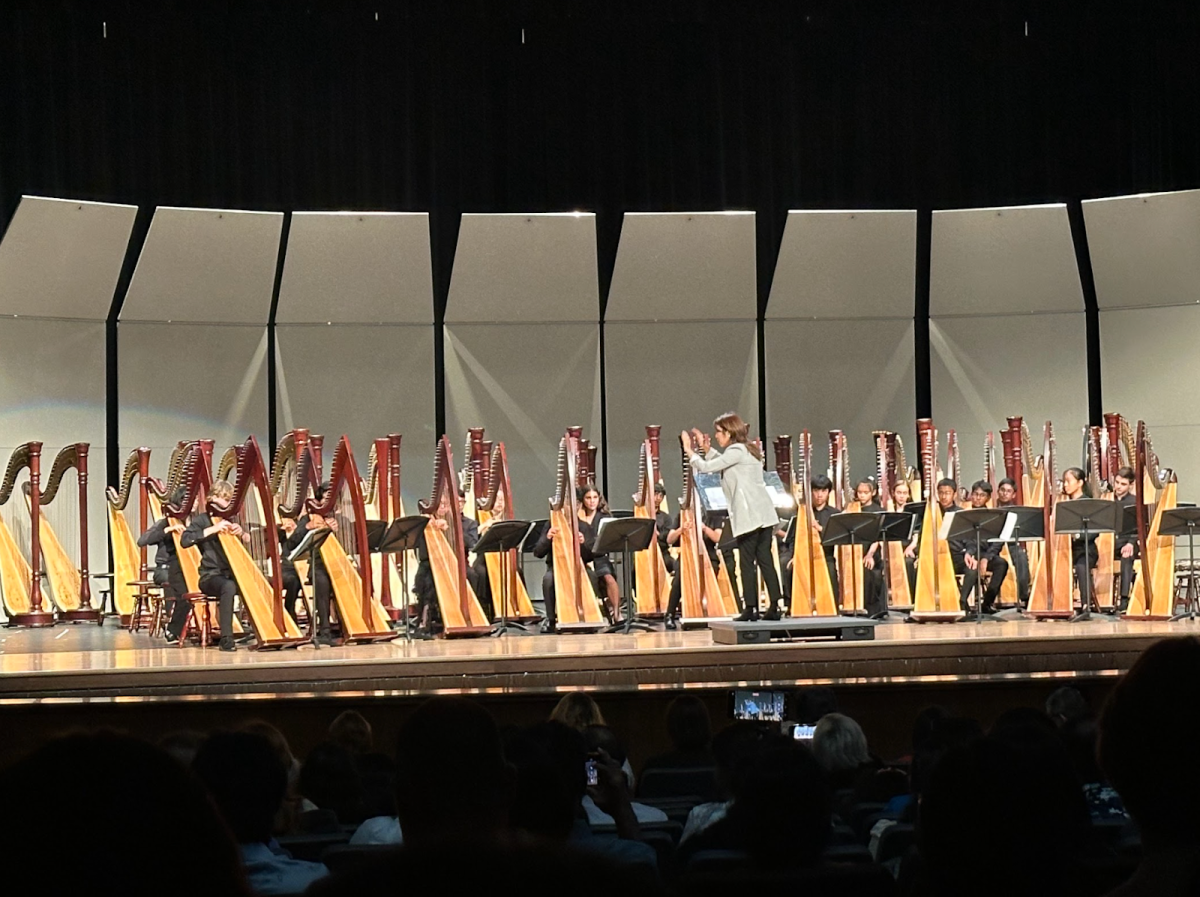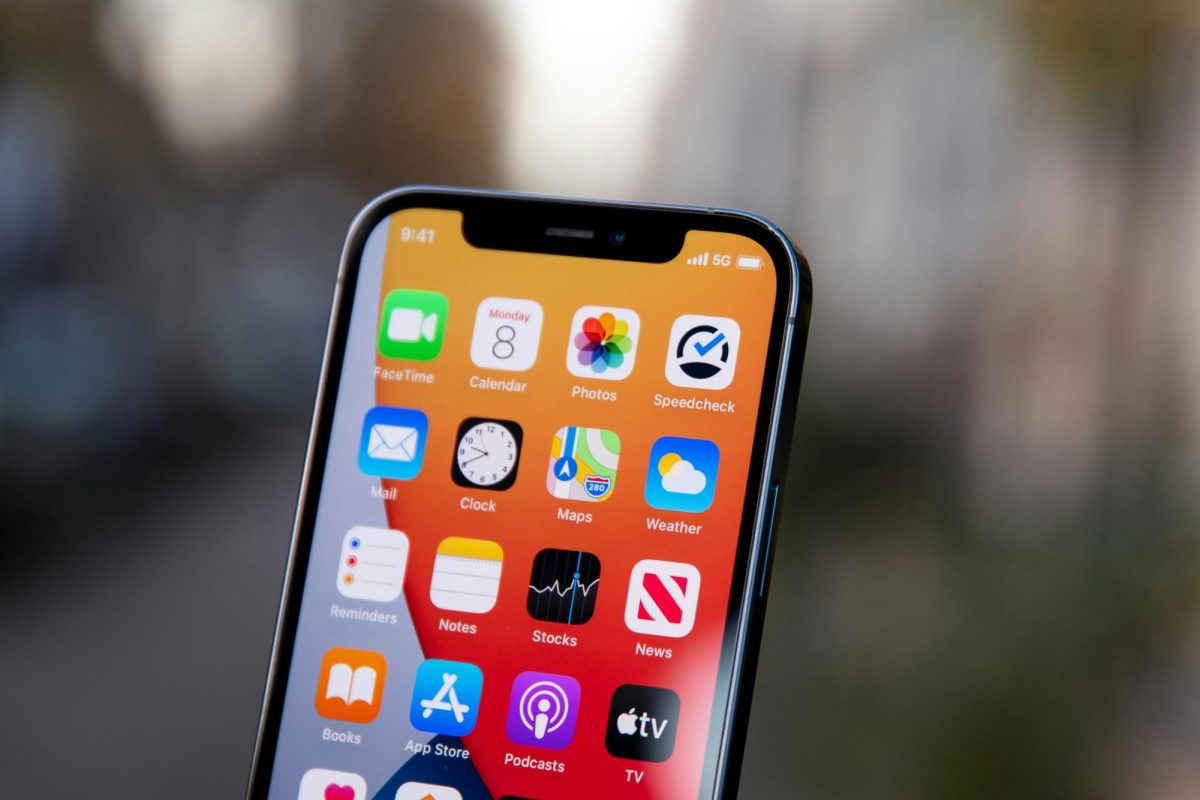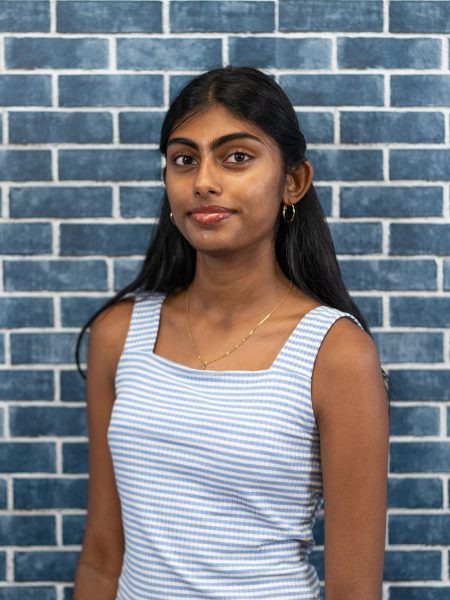For centuries, Americans have been taking to the streets to fight for the issues they care about. In the name of protest, they have organized with their communities, often with nothing but themselves and a poster with a powerful message. For years, older adults have been at the forefront of activism, championing movements such as women’s suffrage and civil rights, but the mid to late 1900s transformed the field of social change. As the youth movement started, students were often the ones standing up to the government for themselves and their future.
What many consider to be the official beginning of the youth movement was the student activism that took place from 1963 to 1975 in strong condemnation of the US war efforts in Vietnam. Then in the 1980’s students organized again to put an end to apartheid in South Africa. Now, we see the same power in the student movement as they protest for a free Palestine.
Throughout history, we’ve seen university students strive towards change, but student activism does not start at higher education. High school students within Frisco ISD (FISD) too have fought for gun reform, mask mandates and more. Furthermore, they have organized against major district proposals, one of the most notable being the redistricting policy of 2021.
This article discusses the major causes that propelled the student movement throughout history and details the efforts of students in our own district fighting for change.
Student activism during the Vietnam War
In the interest of preserving democracy internationally, the US backed South Vietnam, sending approximately 500,000 US militants and approximately 1 billion dollars to the state. As tensions rose, the casualties of the war increased to where over 58,000 American soldiers were killed and many more were left injured. During this time, president Lyndon B. Johnson continued to escalate the war despite North Vietnam’s clearly projected victory.
In addition to the military casualties, the civilian casualties of the war were catastrophic. A 1995 report estimated two million civilian deaths to have occured in both North and South Vietnam as a result of the war. Many of these deaths were a direct result of US military troops murdering civilians and counting their deaths as ‘enemy deaths’ although the large part of civilians killed had no military engagement whatsoever. In addition to murder, torture, rape, bombing, home burnings and forced displacement was subjected upon Vietnamese civilians. The routine dehumanization of the Vietnamese people allowed these actions to occur, often unreported.
Multiple issues that angered American civilians propelled a large activism movement in the US, most notably amongst university students. One of the first significant demonstrations occurred in 1963 at the University of Wisconsin in strong disapproval for the US government’s support of the South Vietnamese prime minister Ngo Dinh Diem.
During the Vietnam War, Diem imprisoned and killed his own citizens for opposing his regime, his justification being that they were supporting communism in North Vietnam. On top of this, he discriminated against Buddhists, who made up the majority of the region, leading them to protest against him. Earlier in the same year the University of Wisconsin protest occurred, the South Vietnamese government killed multiple Buddhists during a celebration of Buddha’s birthday.
Again at the University of Wisconsin, a bigger protest occurred, this time due to a change in the university’s Selective Service System policy which increased the chances of students with poorer grades to become drafted into the war. This time students staged a full sit-in over multiple days at the university’s administration building, occupying it until the administration stated that they would review the policy.
A similar protest occurred at the University of Chicago in May of 1966 when the university publicized class rank. This decision also made lower ranked students vulnerable to become drafted causing a protest at the administration building. In June of 1967, another protest occurred at the University of Chicago over the same concern of class rank and students drafting, which resulted in the suspension of 58 students.
Also in 1967, University of Wisconsin students staged another sit-in, this time in opposition to Dow Chemicals, a company which supplied the US government with napalm, a material used in bombs on Vietnamese civilians. This material was petrifying, burning off the skin and flesh of those who came into contact with it. The horrifying images that became public to the US of Vietnamese people being subjected to the chemical exposure along with Dow Chemical’s recruitment efforts on campus caused outrage. This protest, which involved thousands of students, became violent when students were tear-gassed by local police and beaten by riot sticks, forcing them out of the commerce building, leaving many injured.
Similarly, at Kent State University, another violent interaction between university students and police occured. In protest of the invasion of Cambodia during the war, students organized in the Commons. As the protest escalated, students were tear gassed. Three days later, on May 4, 1970, thousands of students rallied in the Commons leading to the summoning of national guards. Kent State police officers made an effort to disperse students in police jeeps but were met with shouting and rocks being thrown at the cars. Eventually, the National Guard fired at unarmed students killing four and injuring nine.
While the actions of students didn’t directly end the war, their protests shaped public opinion around the actions of the US government, thereby indirectly influencing policy and international relations. All in all, this student movement set the stage for a future of university student activism.
Students activism during the anti-apartheid movement
The aftermath of imperialism left the minority of white individuals who made up around 20% of the population in South Africa, in control of almost all governmental systems. Laws passed by this group displaced people of color living in South Africa away from their homes and even segregated individuals in public spaces based on race. Furthermore, the Prohibition of Mixed Marriages Act and the Immorality Amendment Act prohibited interracial marriage. The Indemnity Act of 1961 allowed police officers to commit acts of violence against people of color in South Africa, leading to the spread of horrifying images amongst international communities showing the brutality endured by non-white South Africans.
These actions, which came not long after the civil rights movement, outraged students pushing them to organize in efforts to pressure their universities into divesting from companies that furthered apartheid in South Africa. In this effort, preventing their universities’ money from furthering apartheid would dismantle the ability for the white ruling class of South Africa to continue furthering their systems of oppression, simply because they would no longer have the funding to do so.
At Columbia University, students occupied Hamilton Hall for three weeks, demanding the divestment of their school from companies furthering apartheid. Planned by the Coalition for a Free South Africa, which was not only made up of students, but also university alumni and staff, over 250 people barricaded the Hamilton Hall university building. As a result of this action, the university threatened to expel many who were involved in the resistance, despite the organizers clearly marking exit signs to ensure safety. The actions of the activists eventually resulted in the divestment of Columbia university from apartheid driven companies, inspiring the resistance of students at universities across the country.
One of these universities was UNC Chapel Hill. Here, students built hut-like structures on their universities campus emulating the housing that non-white people in South Africa were living in due to forced displacement. While these students were initially told that they were not allowed to protest, their efforts led to the universities divestment from South African companies more than a year later.
The largest divestment, however, came from the University of California system, which withdrew 3.1 billion dollars from companies with ties to apartheid. This action came from an uproar of student activism as University of California Berkeley students camped outside of Sproul Hall leading to the arrest of 158 protesters. The resistance did not stop there. In response to the arrest, thousands of students boycotted classes to show their support for the anti-apartheid movement. About a year later, the University of California Regents voted in favor of divestment.
Present day pro-Palestinian student activism
Currently, a different issue absorbs the activism of university students: Palestine.
Since the mid 1900s, the land that lies west of the Mediterranean sea has long been debated upon. After the UK gained control of Palestine in 1922, many Jewish people from Eastern Europe immigrated to the region due to the religious persecution they endured at the hands of the Nazi regime. Years later, a partition was mandated in the region and the Jewish state, Israel, proclaimed independence. In the following years, hundreds of thousands of Palestinians were forcibly displaced from their land. Since 1967, Palestinians have been living under occupation meaning everything from their water and electricity, to their movement is restricted by the Israeli government.
Amidst recent escalation in Gaza which has resulted in the death of tens of thousands of Palestinians, students from many universities have spoken out. At 117 universities, students have set up tents on campus, emulating the tents Palestinians have been living in in Gaza due to forced displacement. This act of protest not only shows these university student’s solidarity with Palestinians but also demands that their university divest from companies which have ties to Israel.
Notably, Columbia University students organized an encampment which lasted for 14 days. On April 18, 2024, 108 Columbia students were arrested as a result of the protest. In addition, students faced suspension due to “disruptive behavior, violation of law, violation of university policy, failure to comply, vandalism or damage to property, and unauthorized access or egress,” as stated by the Columbia Spectator. On day seven of the protest, a walk out occurred amongst Columbia faculty which called for amnesty for protesters. On April 29, 2024, Columbia University president Minouche Shafik, announced that the university “will not divest from Israel.”
In addition to Columbia, Stanford University, among others, set up encampments to call for divestment. Most significantly, Stanford University student’s encampments to protest in support of Palestine lasted over 150 days, longer than any other university encampment. However, this protest too, resulted in several arrests and suspension of student protesters. Amongst other students, award-winning student journalist of the Stanford Daily was arrested while covering a protest.
In the past few months, multiple students who have engaged in pro-Palestinian protests have been detained. Mahmoud Kalil, a key organizer in the Columbia University protests, was detained on March 8, 2025 despite his legal status and the absence of an arrest warrant, according to NBC News. Federal authorities stated that Kalil “had exigent circumstances to conduct the warrantless arrest.”
In an exclusive statement with The Guardian from a detention center in Louisiana, Kalil stated his arrest, “Was a direct consequence of exercising [his] right to free speech as [he] advocated for a free Palestine and an end to the genocide in Gaza.” Secretary of State Marco Rubio stated that the government has the right to revoke individuals immigration status if their “activities in the United States would have potentially serious adverse foreign policy consequences.” In addition to this, the Department of Homeland Security previously stated that Kalil’s actions could have “potentially serious adverse foreign policy consequences for the United States.” According to CNN, Kalil’s legal team stated that “Despite the government’s failure to prove that Mahmoud broke any law, the court has decided that lawful permanent residents can have their status revoked for pro-Palestine advocacy. This is a blatant violation of the First Amendment and a dangerous precedent for anyone who believes in free speech and political expression.”
Another student, Rumeysa Ozturk of Tufts University was detained on March 25, 2025 despite carrying an F-1 visa. Ozturk, too, engaged in pro-Palestinian activism, cowriting an op-ed criticizing Tufts Univeristy’s response to student action in demand of divestment from Isreal. Ozturk’s attorneys, too, state that the arrest was a violation of her first amendment rights. Additionally, Lawyer Jessie Rossman stated that the arrest was meant to send a message that, “If you engage in speech that the administration disagrees with, you will be punished.”
Now, students continue to face significant repercussions due to their activism.
Frisco ISD student activism
Although university students led, and continue to lead movements on campus, high school students in FISD have long been engaging in activism too.
One of the most pressing issues affecting students in high school is gun violence. In FISD, students have organized to take action. At Frisco High School, students organized a walk-out in 2018 to recognize the anniversary of the Columbine High School shooting and to call for government action on gun control. This protest came after a threat was made to Frisco High School a week prior, causing students to call for further change. A similar walk-out occurred around the same time at Centennial High School. Students who participated in the protest expressed the urgency of the issue and their fear surrounding their safety at school. These protests were met with neither backlash nor support from administrators.
From Independence High School, students Shivani Jayaraj and Saanvi Mukkara organized a “March for Our Lives” event on Main Street in Frisco on June 11, 2022 after a shooting occurred in Uvalde. They stated that their efforts were non-political and instead were advocating for school safety.
At the height of COVID-19 in 2021, students Katherine Shaw and Srinath Nandigam organized a petition calling for mask mandates at FISD campuses. While masks were required at school for the 2020-2021 school year, FISD stopped requiring face coverings on June 1, 2021. The following school year, the students organized this mask mandate petition which acquired over 4,500 signatures and was presented at a September 2021 school board meeting. This petition did not result in a change in policy from FISD schools.
Even more specific to FISD, rezoning proposals introduced in 2021 caused outrage amongst the community. Due to increased enrollment into FISD schools, students were to be subjected to school changes resulting in longer commute times and fewer extracurricular opportunities. While the protests that resulted in this proposal were largely led by parents, students were also in attendance. To further the movement, a petition was created by a then freshman, Mann Bellani, opposing the redistricting plan. This issue directly affected Bellani as he was required to transfer schools. He reported that his petition garnered support from 350 individuals who signed it.
How you can get involved
Student activism has been a large part of the academic careers of many students, both in universities, dating back to the 1900s and now in high schools across the country.
The foundation to getting involved in activism is a strong understanding of current events. Keeping up with news is the best way to gain this understanding, however, not all news outlets are reliable. When reading or watching news, be aware of signs of political bias. This can be identified by the use of opinion based speech rather than statements of objective facts. The usage of words such as ‘me’ or ‘I’ can be tell-tale signs of this. Additionally, bias can be found in the way a news organization chooses which facts to include and which to omit. Read multiple news articles or watch multiple reliable news programs to get a holistic understanding on a subject matter. Lastly, be knowledgeable about who owns news organizations and their beliefs. Understanding this and the beliefs of the majority of those who frequently read or watch that news program can be valuable information when deciphering media bias. Bias is rarely easily recognizable, so keeping up to date with factual information is instrumental in forming a clear understanding of current issues.
One of the greatest tools which can be used to spread awareness for activism movements today is social media. In addition to shedding light on pressing issues, social media can be used to become aware of existing protests happening in your area and spread the message about protests organized by others. In addition to utilizing social media, students can also get in touch with local representatives. Constituents may call representative’s offices to advocate for issues, vocalizing their support or opposition for policies.
Regardless of the avenue, youth activism continues to prove to be vital to social change. Getting involved is critical to see change in your community and in the country as a whole. However, it is crucial to be knowledgeable about the consequences of activism too. During the Vietnam protests, the anti-apartheid movement and the encampments for Palestine alike, students have been arrested and suspended as a result of their activism. While not all of these movements resulted in alignment to the goals of students, they all created change in their own ways. After all, the encampments which can be seen recently largely drew inspiration from those created to protest apartheid.
All in all, students have, and continue to be voices for peace, human rights and liberation. In the words of Mahmoud Kalil, “Students have long been at the forefront of change – leading the charge against the Vietnam war, standing on the frontlines of the civil rights movement and driving the struggle against apartheid in South Africa. Today, too, even if the public has yet to fully grasp it, it is students who steer us toward truth and justice.”









